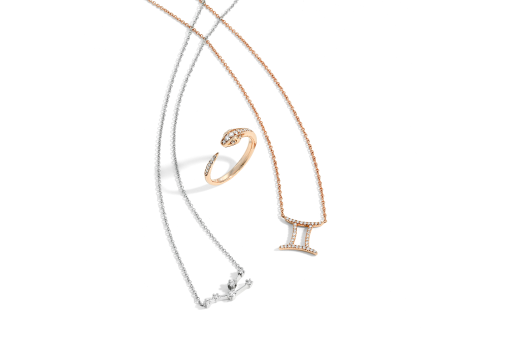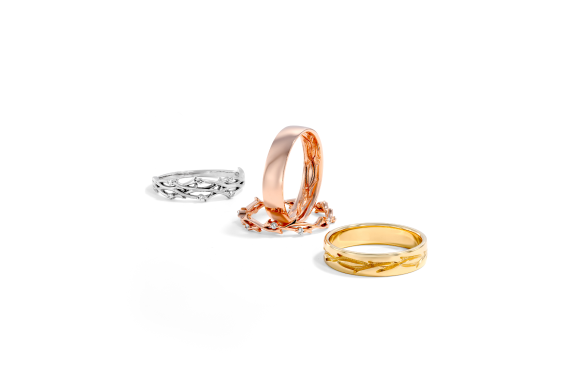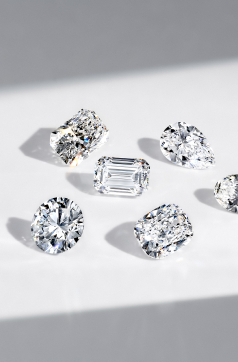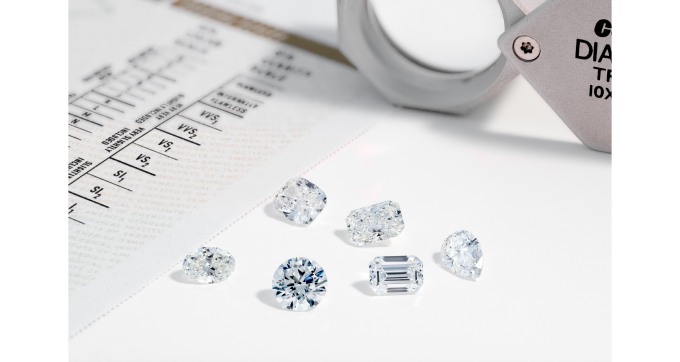Quick Summary
Gen Z is changing the engagement ring tradition, with over half now choosing lab-grown diamonds for their affordability, ethics, and style. Lab-created diamonds are chemically identical to natural ones but cost up to 85% less, making larger stones and personalized settings more accessible. Moissanite is also rising in popularity for its intense brilliance and lower price, allowing couples to prioritize wedding experiences or future savings. Colored lab gemstones like sapphires and emeralds offer a vibrant, expressive alternative to classic diamonds. At Keyzar, couples can explore a wide range of lab-grown options with transparent pricing and modern design tools. These choices reflect Gen Z’s values: love without guilt, beauty with intention, and rings that tell a personal story.
For generations, natural diamonds defined what an engagement ring should be. But Gen Z is flipping the script, and doing it with style. Today, over half of Gen Z couples choose lab-grown diamonds, according to Fortune. When asked, most said they'd take a 3-carat lab diamond over a 1-carat natural one without a second thought.
So, what’s behind this shift? It’s about more than sparkle. Ethics, affordability, and a fresh take on tradition are all part of the story. In this guide, we’ll explore how Gen Z is reshaping the meaning of “forever” and why lab-grown diamonds are leading the way.
The History of Diamonds in Engagement Culture
The diamond engagement ring tradition dates back to the 1400s, but it wasn’t until the Victorian era that it became widespread. After the famous "A Diamond is Forever" campaign appeared in 1938, Americans were convinced that mined diamonds were the only acceptable way to propose marriage. Even after the first lab diamond appeared in 1954, most engagement rings featured a natural one. As recently as 2019, only around 12% of all rings had a lab-grown center stone.
In 2023, lab diamonds saw a major shift from alternative to mainstream, driven largely by Gen Z couples entering the engagement stage. That year, 46% of engagement rings featured lab-grown diamonds, marking the first time they came close to matching natural diamond sales. By 2025, the shift became even more clear. According to The Knot’s 2025 Real Weddings Study, over half of all couples are now proposing with lab-grown diamonds or Moissanite. The trend isn’t slowing down—and the reasons go far beyond price. Let’s take a closer look at why so many couples are choosing lab-created stones.
Why Gen Z Is Rethinking the Diamond
Several factors are driving Gen Z skepticism toward diamonds. Economic uncertainty has made them more cautious about spending, while access to information has exposed the markup and marketing tactics behind diamond pricing. Gen Z also weighs ethical and environmental costs more heavily than previous buyers and won’t hesitate to reject products that don't align with their values.
Price Doesn’t Equal Value
Natural diamonds carry enormous markups that many young buyers find difficult to justify. You might pay up to $10,000 for a one-carat natural diamond that costs a fraction of that amount to extract and cut. Gen Z buyers would rather spend money on experiences, travel, or saving for a house than on a stone that might lose half its value later on. The idea that love should be measured in carats feels outdated and financially irresponsible to many Gen Z couples.
Ethical and Environmental Concerns
So-called conflict diamonds remain a real concern despite industry efforts to address the problem. Many young buyers worry about inadvertently funding violence or exploitation, even with certification systems in place. They question whether any natural diamond can be truly "conflict-free" when mining operations can displace communities and damage local ecosystems.
What Gen Z Is Choosing Instead - And Why It Makes Sense
When it comes to engagement rings, Gen Z is drawn to alternatives that offer beauty and meaning without the ethical concerns or high prices of traditional diamonds. These choices allow couples to express their individuality while making decisions that reflect their environmental and social values.
Lab-Grown Diamonds: Real Sparkle, No Guilt
Lab-grown diamonds offer everything Gen Z values: beauty, transparency, and a smarter use of money. These diamonds are chemically identical to natural ones, but they form in carefully controlled labs instead of deep underground. That means fewer ethical concerns and a price that’s 60 to 85% lower, without any visual compromise. You’d need specialized tools to tell them apart, but what really matters is what they represent.
For many couples, the savings mean more than just size or sparkle. You might be able to choose a two-carat lab-grown diamond instead of settling for one carat, or opt for a more delicate style like The Lexie or The Penelope and use the extra funds for your wedding, honeymoon, or future plans. It’s about making choices that reflect your values: love without waste, beauty without guilt, and a ring that’s as affordable as it is beautiful.
For example, The Lexie in 14K gold with a 1 carat natural round diamond costs approximately $3900. The same ring with a 1 carat lab diamond is 60% less at approximately $1500. Every lab-grown diamond in Keyzar’s collection is hand-selected for brilliance and offered with total pricing transparency, making the savings obvious and irresistible.
Moissanite: More Fire, Less Fuss
Moissanite has become increasingly popular among Gen Z couples who want something bold, elegant, and budget-conscious. This lab-created stone, made from silicon carbide, reflects more fire and brilliance than a diamond: even trained jewelers can mistake it at first glance. With a much lower price point, you can choose standout designs like The Lindsey or The Pave Charlotte without straining your budget.
The Lindsey in 14K gold with a 1-carat natural round diamond costs around $4,800. Replace the center stone with a 1-carat Moissanite, and the price drops to about $2,600. That leaves room to personalize your wedding bands, pick out matching bridal jewelry, or plan the kind of honeymoon you’ll always remember. When you choose Moissanite from Keyzar, you’re choosing intention: style that reflects your values and a ring that feels personal from the start.
Colored Gemstones: A Personal Signature
Colored lab gemstones open the door to personal expression in a way that feels both thoughtful and modern. Sapphires come in rich shades of blue, while emeralds offer rich green hues that photograph beautifully on social media. Whether you’re drawn to the vintage charm of The Halo Stephanie or the modern glamor of The Kristen, these stones let you choose something that reflects your story without pushing you past your budget.
For example, The Halo Stephanie in 18K gold with a 1-carat natural round diamond costs around $5,500. The same ring with a 1-carat lab-grown emerald or sapphire is just $2,600. That’s a huge difference, and one that gives you space to add gorgeous extras like a Euro shank or invest in a more glamorous wedding venue.What’s there not to love about that?
Jewelers Are Adapting to the Shift
Established jewelers now offer lab-grown diamonds, Moissanite, and lab gemstones alongside traditional options. At Keyzar, we make it easy and enjoyable to explore different stones and setting combinations, complete with virtual try-on tools that help you make thoughtful choices from home. With clear pricing, flexible financing, and a modern design approach, Keyzar appeals to Gen Z shoppers who value both ethics and beauty. The message is clear: lab-created stones aren’t second-best: they’re part of the future of fine jewelry.
Gen Z isn't abandoning romance by choosing alternatives to traditional diamonds. Instead, they're redefining what romantic gestures should look like in the modern era. Their ring choices reflect deeper values about authenticity, financial responsibility, and environmental stewardship that extend far beyond jewelry purchases.
Choosing an engagement ring now feels less like checking a required box and more like telling your unique story as a couple. Whether you select lab-grown diamonds, Moissanite, or colorful gemstones, your choice communicates something meaningful about your relationship and values. At Keyzar, we have an extensive collection of center stones that tell your unique love story without compromising your budget or beliefs. Shop now!






